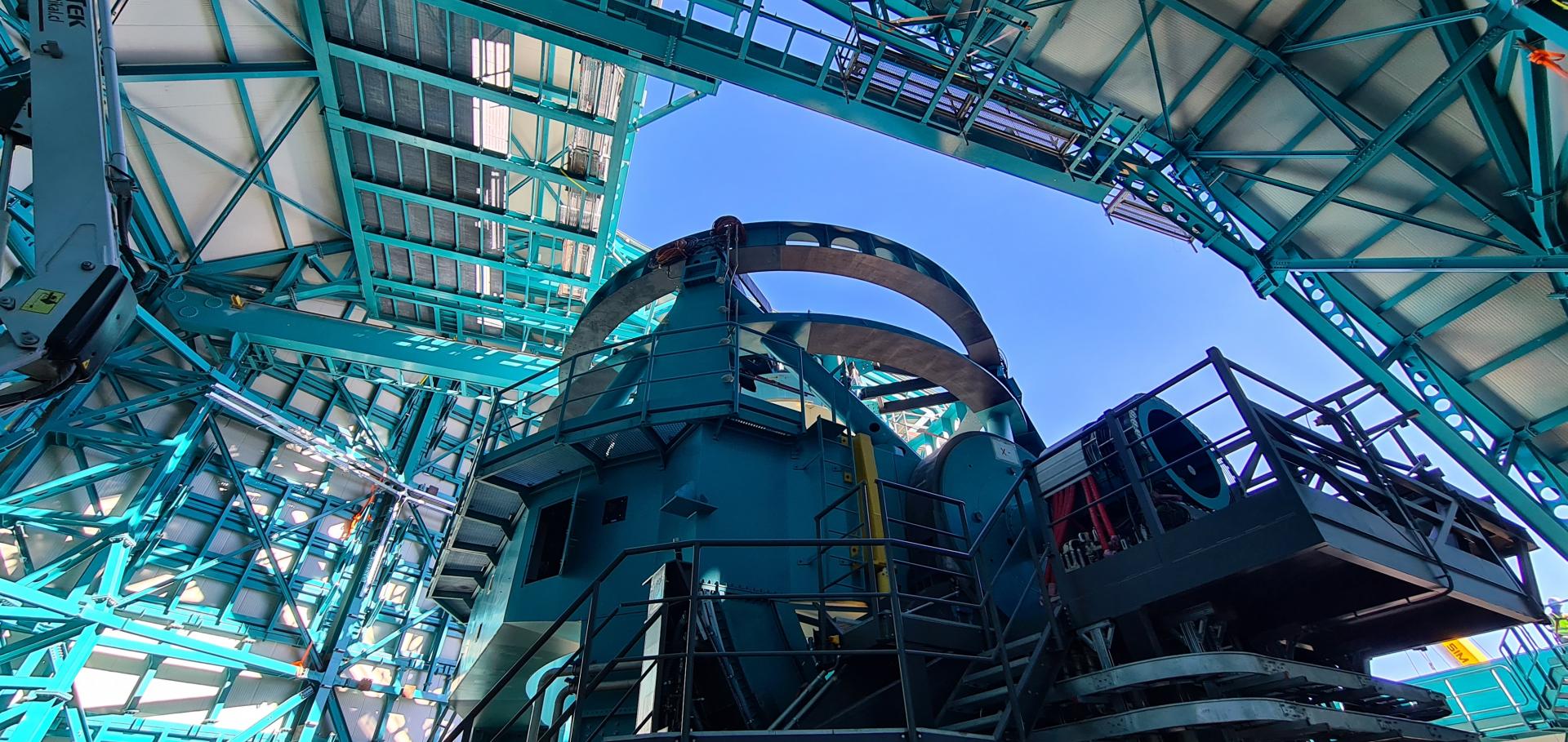Search for Higgs bosons predicted in two-Higgs-doublet models via decays to tau lepton pairs in 1.96 TeV pp collisions.
Phys Rev Lett 103:20 (2009) 201801
Authors:
T Aaltonen, J Adelman, T Akimoto, B Alvarez González, S Amerio, D Amidei, A Anastassov, A Annovi, J Antos, G Apollinari, A Apresyan, T Arisawa, A Artikov, W Ashmanskas, A Attal, A Aurisano, F Azfar, W Badgett, A Barbaro-Galtieri, VE Barnes, BA Barnett, P Barria, P Bartos, V Bartsch, G Bauer, P-H Beauchemin, F Bedeschi, D Beecher, S Behari, G Bellettini, J Bellinger, D Benjamin, A Beretvas, J Beringer, A Bhatti, M Binkley, D Bisello, I Bizjak, RE Blair, C Blocker, B Blumenfeld, A Bocci, A Bodek, V Boisvert, G Bolla, D Bortoletto, J Boudreau, A Boveia, B Brau, A Bridgeman, L Brigliadori, C Bromberg, E Brubaker, J Budagov, HS Budd, S Budd, S Burke, K Burkett, G Busetto, P Bussey, A Buzatu, KL Byrum, S Cabrera, C Calancha, M Campanelli, M Campbell, F Canelli, A Canepa, B Carls, D Carlsmith, R Carosi, S Carrillo, S Carron, B Casal, M Casarsa, A Castro, P Catastini, D Cauz, V Cavaliere, M Cavalli-Sforza, A Cerri, L Cerrito, SH Chang, YC Chen, M Chertok, G Chiarelli, G Chlachidze, F Chlebana, K Cho, D Chokheli, JP Chou, G Choudalakis, SH Chuang, K Chung, WH Chung, YS Chung, T Chwalek, CI Ciobanu, MA Ciocci, A Clark, D Clark, G Compostella, ME Convery, J Conway, M Cordelli, G Cortiana, CA Cox, DJ Cox, F Crescioli, C Cuenca Almenar, J Cuevas, R Culbertson, JC Cully, D Dagenhart, M Datta, T Davies, P de Barbaro, S De Cecco, A Deisher, G De Lorenzo, M Dell'Orso, C Deluca, L Demortier, J Deng, M Deninno, PF Derwent, A Di Canto, GP di Giovanni, C Dionisi, B Di Ruzza, JR Dittmann, M D'Onofrio, S Donati, P Dong, J Donini, T Dorigo, S Dube, J Efron, A Elagin, R Erbacher, D Errede, S Errede, R Eusebi, HC Fang, S Farrington, WT Fedorko, RG Feild, M Feindt, JP Fernandez, C Ferrazza, R Field, G Flanagan, R Forrest, MJ Frank, M Franklin, JC Freeman, I Furic, M Gallinaro, J Galyardt, F Garberson, JE Garcia, AF Garfinkel, P Garosi, K Genser, H Gerberich, D Gerdes, A Gessler, S Giagu, V Giakoumopoulou, P Giannetti, K Gibson, JL Gimmell, CM Ginsburg, N Giokaris, M Giordani, P Giromini, M Giunta, G Giurgiu, V Glagolev, D Glenzinski, M Gold, N Goldschmidt, A Golossanov, G Gomez, G Gomez-Ceballos, M Goncharov, O González, I Gorelov, AT Goshaw, K Goulianos, A Gresele, S Grinstein, C Grosso-Pilcher, RC Group, U Grundler, J Guimaraes da Costa, Z Gunay-Unalan, C Haber, K Hahn, SR Hahn, E Halkiadakis, B-Y Han, JY Han, F Happacher, K Hara, D Hare, M Hare, S Harper, RF Harr, RM Harris, M Hartz, K Hatakeyama, C Hays, M Heck, A Heijboer, J Heinrich, C Henderson, M Herndon, J Heuser, S Hewamanage, D Hidas, CS Hill, D Hirschbuehl, A Hocker, S Hou, M Houlden, S-C Hsu, BT Huffman, RE Hughes, U Husemann, M Hussein, J Huston, J Incandela, G Introzzi, M Iori, A Ivanov, E James, D Jang, B Jayatilaka, EJ Jeon, MK Jha, S Jindariani, W Johnson, M Jones, KK Joo, SY Jun, JE Jung, TR Junk, T Kamon, D Kar, PE Karchin, Y Kato, R Kephart, W Ketchum, J Keung, V Khotilovich, B Kilminster, DH Kim, HS Kim, HW Kim, JE Kim, MJ Kim, SB Kim, SH Kim, YK Kim, N Kimura, L Kirsch, S Klimenko, B Knuteson, BR Ko, K Kondo, DJ Kong, J Konigsberg, A Korytov, AV Kotwal, M Kreps, J Kroll, D Krop, N Krumnack, M Kruse, V Krutelyov, T Kubo, T Kuhr, NP Kulkarni, M Kurata, S Kwang, AT Laasanen, S Lami, S Lammel, M Lancaster, RL Lander, K Lannon, A Lath, G Latino, I Lazzizzera, T LeCompte, E Lee, HS Lee, SW Lee, S Leone, JD Lewis, C-S Lin, J Linacre, M Lindgren, E Lipeles, A Lister, DO Litvintsev, C Liu, T Liu, NS Lockyer, A Loginov, M Loreti, L Lovas, D Lucchesi, C Luci, J Lueck, P Lujan, P Lukens, G Lungu, L Lyons, J Lys, R Lysak, D MacQueen, R Madrak, K Maeshima, K Makhoul, T Maki, P Maksimovic, S Malde, S Malik, G Manca, A Manousakis-Katsikakis, F Margaroli, C Marino, CP Marino, A Martin, V Martin, M Martínez, R Martínez-Ballarín, T Maruyama, P Mastrandrea, T Masubuchi, M Mathis, ME Mattson, P Mazzanti, KS McFarland, P McIntyre, R McNulty, A Mehta, P Mehtala, A Menzione, P Merkel, C Mesropian, T Miao, N Miladinovic, R Miller, C Mills, M Milnik, A Mitra, G Mitselmakher, H Miyake, N Moggi, MN Mondragon, CS Moon, R Moore, MJ Morello, J Morlock, P Movilla Fernandez, J Mülmenstädt, A Mukherjee, Th Muller, R Mumford, P Murat, M Mussini, J Nachtman, Y Nagai, A Nagano, J Naganoma, K Nakamura, I Nakano, A Napier, V Necula, J Nett, C Neu, MS Neubauer, S Neubauer, J Nielsen, L Nodulman, M Norman, O Norniella, E Nurse, L Oakes, SH Oh, YD Oh, I Oksuzian, T Okusawa, R Orava, K Osterberg, S Pagan Griso, C Pagliarone, E Palencia, V Papadimitriou, A Papaikonomou, AA Paramonov, B Parks, S Pashapour, J Patrick, G Pauletta, M Paulini, C Paus, T Peiffer, DE Pellett, A Penzo, TJ Phillips, G Piacentino, E Pianori, L Pinera, K Pitts, C Plager, L Pondrom, O Poukhov, N Pounder, F Prakoshyn, A Pronko, J Proudfoot, F Ptohos, E Pueschel, G Punzi, J Pursley, J Rademacker, A Rahaman, V Ramakrishnan, N Ranjan, I Redondo, P Renton, M Renz, M Rescigno, S Richter, F Rimondi, L Ristori, A Robson, T Rodrigo, T Rodriguez, E Rogers, S Rolli, R Roser, M Rossi, R Rossin, P Roy, A Ruiz, J Russ, V Rusu, B Rutherford, H Saarikko, A Safonov, WK Sakumoto, O Saltó, L Santi, S Sarkar, L Sartori, K Sato, A Savoy-Navarro, P Schlabach, A Schmidt, EE Schmidt, MA Schmidt, MP Schmidt, M Schmitt, T Schwarz, L Scodellaro, A Scribano, F Scuri, A Sedov, S Seidel, Y Seiya, A Semenov, L Sexton-Kennedy, F Sforza, A Sfyrla, SZ Shalhout, T Shears, PF Shepard, M Shimojima, S Shiraishi, M Shochet, Y Shon, I Shreyber, P Sinervo, A Sisakyan, AJ Slaughter, J Slaunwhite, K Sliwa, JR Smith, FD Snider, R Snihur, A Soha, S Somalwar, V Sorin, T Spreitzer, P Squillacioti, M Stanitzki, R St Denis, B Stelzer, O Stelzer-Chilton, D Stentz, J Strologas, GL Strycker, JS Suh, A Sukhanov, I Suslov, T Suzuki, A Taffard, R Takashima, Y Takeuchi, R Tanaka, M Tecchio, PK Teng, K Terashi, J Thom, AS Thompson, GA Thompson, E Thomson, P Tipton, P Ttito-Guzmán, S Tkaczyk, D Toback, S Tokar, K Tollefson, T Tomura, D Tonelli, S Torre, D Torretta, P Totaro, S Tourneur, M Trovato, S-Y Tsai, Y Tu, N Turini, F Ukegawa, S Vallecorsa, N van Remortel, A Varganov, E Vataga, F Vázquez, G Velev, C Vellidis, M Vidal, R Vidal, I Vila, R Vilar, T Vine, M Vogel, I Volobouev, G Volpi, P Wagner, RG Wagner, RL Wagner, W Wagner, J Wagner-Kuhr, T Wakisaka, R Wallny, SM Wang, A Warburton, D Waters, M Weinberger, J Weinelt, WC Wester, B Whitehouse, D Whiteson, AB Wicklund, E Wicklund, S Wilbur, G Williams, HH Williams, P Wilson, BL Winer, P Wittich, S Wolbers, C Wolfe, T Wright, X Wu, F Würthwein, S Xie, A Yagil, K Yamamoto, J Yamaoka, UK Yang, YC Yang, WM Yao, GP Yeh, K Yi, J Yoh, K Yorita, T Yoshida, GB Yu, I Yu, SS Yu, JC Yun, L Zanello, A Zanetti, X Zhang, Y Zheng, S Zucchelli, CDF Collaboration
Abstract:
We present the results of a search for Higgs bosons predicted in two-Higgs-doublet models, in the case where the Higgs bosons decay to tau lepton pairs, using 1.8 fb(-1) of integrated luminosity of pp collisions recorded by the CDF II experiment at the Fermilab Tevatron. Studying the mass distribution in events where one or both tau leptons decay leptonically, no evidence for a Higgs boson signal is observed. The result is used to infer exclusion limits in the two-dimensional space of tanbeta versus m(A) (the ratio of the vacuum expectation values of the two Higgs doublets and the mass of the pseudoscalar boson, respectively).


